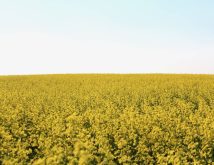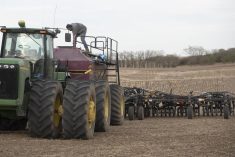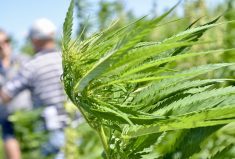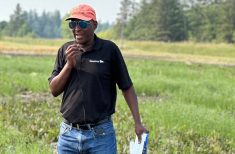Results from intercropping trials are showing that planting two crops together offers higher yields than monocultures.
It’s old hat for organic farmers, who have been seeding cover and relay crops since the days when Grandpa seeded peas and oats together, harvested them with a horse-drawn binder, and pitched the sheaves off a hayrack to his cows in winter.
In fact, it goes back even further than that, to the intercropping of corn, beans and squash by indigenous peoples in North America.
So it may be surprising that cutting-edge research is looking back at an ancient practice that offers benefits in terms of light exposure, nutrients and water efficiency.
Read Also

Manitoba boosts stake in cereals centre to $23.5 million
Premier Wab Kinew said the additional project funds will help ‘Trump-proof’ the provincial economy.
MORE FOR LESS
Seeding two or more crops can allow a farmer to grow more on the same land base, use less fertilizer, and spend less money, time and effort fighting pests, disease and insects, according to Scott Chalmers, a diversification technician from the Westman Agricultural Diversification Organization (WADO) in Melita.
Plots last summer that looked at optimal seeding rates for Clearfield 7130 canola and CDC Stryker peas in the same row, found that a half rate of canola and a full rate of peas yielded 4,000 pounds per acre, compared to 2,500 lbs. and 2,000 lbs. for each crop planted separately.
“It was incredible what happened. The love between the canola and peas was just remarkable,” he said, in a presentation at the OPAM annual general meeting.
“We nearly doubled our yield – about 70 per cent more yield – just by adding these two crops together.”
The two crops would have to be separated with a rotary screener right off the combine, however, to avoid the risk of heating in the canola, he added.
With oats and peas, the researchers found that the oats overpowered the peas, but he added that seeding rates may not have been optimal. For silage, there was a significant yield advantage at two-thirds rate for both compared to oats on their own.
HUGE DEMAND
Hairy vetch and winter wheat seeded on Sept. 25 near Reston showed some success in getting the hairy vetch to overwinter and set seed the following fall, he said.
Hairy vetch is in “huge demand” by the organic sector due to its high rate of nitrogen fixation, he
COMPOUNDING BENEFITS: Trials and field experience suggest intercropped peas and canola can increase yields and decrease input costs.
added, and sells for up to $3 per pound.
“They seem to complete each other very well,” he said. “The winter wheat seems to hold up the hairy vetch. It will grow four or five feet tall, but it needs something to climb up or it will fall over.”
Although only 20 per cent of the crop survived the winter, full hairy vetch pods were visible. At harvest, it appeared that a 125 per cent winter wheat seeding rate sent the line on the graph indicating hairy vetch yield soaring nearly straight up.
“The obvious conclusion you come to is that hairy vetch likes to be competitive with something else. It doesn’t like growing on its own,” he said. “There’s some sort of reaction with light or nutrients, so that when it’s under stress it actually produces more seed.”
Chalmers, who comes from a mainly conventional ag background and specialized knowledge of botany and chemistry, said that farmers can expect to see more blurring of the lines between organic and conventional zero-till research.
COLIN ROSENGREN
He joked that he felt like there was a “target” painted on him, which was reinforced by occasional furrowed brow among the 80-odd organic farmers in the room whenever he mentioned the high cost of nitrogen or new chemical options such as Clearfield herbicide-resistant crop technology.
MORE TRIALS
But he noted that in 2011, trials with the Rodale Institute’s crop roller will begin at WADO, in consultation with University of Manitoba plant sciences professor, Martin Entz.
“Organic farming is rather new to me, but learning about the practices that organic farmers do right now is actually blending well right now with where the province wants to take agriculture from now on,” he said.
“In conventional, there’s a lot of dollars to be made, but in organic there’s a lot of conservation in mind with the intent to improve our pocketbook as well as our environment and the food we eat.” [email protected]














